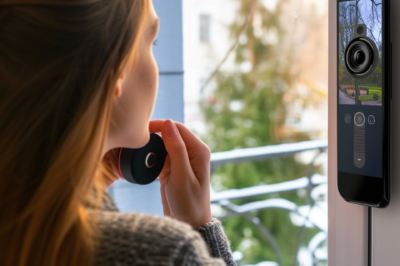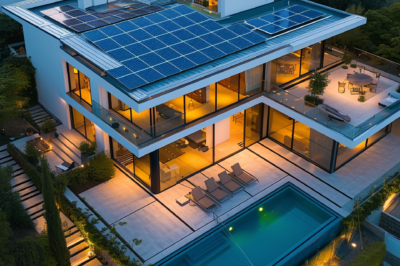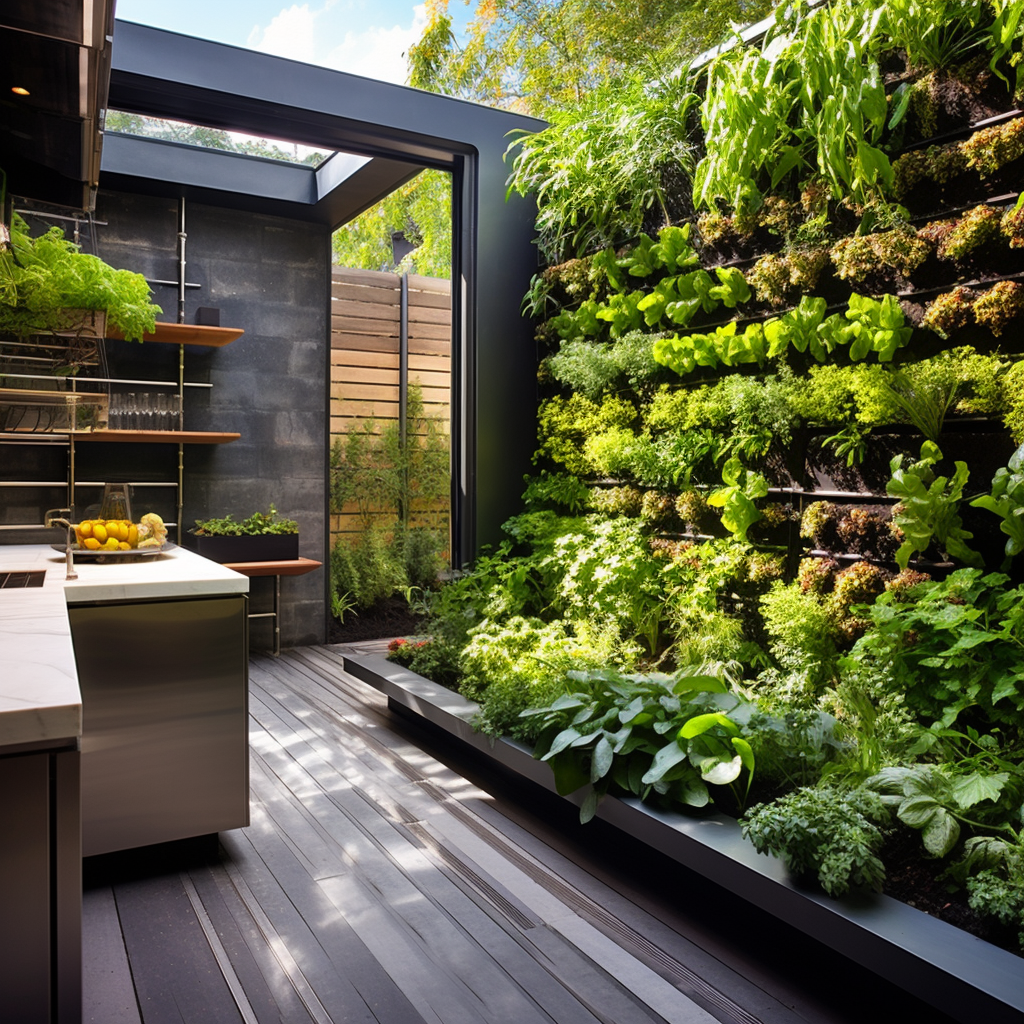
Maximize Your Space: Craft a Lush Oasis Indoors with Smart Home Technology
Living in a small space doesn’t mean you have to give up on having a green thumb. With a bit of creativity and the right tools, you can transform even the tiniest of apartments into a productive garden. Think of your living space as a blank canvas, waiting to be painted with shades of green. It’s not about the square footage; it’s about using it wisely. Let’s explore how you can bring the garden indoors and make it smart, stylish, and space-efficient.
Here are some of the most common queries I get from fellow plant enthusiasts looking to bring a touch of nature into their homes.
Can you grow vegetables indoors?
Yes, absolutely! With the right setup, you can grow a variety of vegetables indoors. Leafy greens like lettuce and spinach, herbs, and even tomatoes can thrive in an indoor garden. Just make sure they have enough light—either from a sunny window or from grow lights—and you’ll be harvesting your own veggies in no time.
How do you set up a smart grow light?
Setting up a smart grow light is simpler than you might think. First, choose a light that fits the size of your garden and has the features you need, like a timer or adjustable spectrum. Then, position the light above your plants at the recommended distance. Plug it in, set the timer to match your plants’ light needs, and you’re good to go. Some models even connect to your smartphone for easy control.
What are the best plants for vertical gardening?
When it comes to vertical gardening, look for plants that either grow upwards naturally or can be trained to climb. Pothos, philodendron, and ivy are all excellent choices for a living wall. If you’re looking for something more unique, try air plants—they don’t need soil and can be attached directly to the wall or hung in glass terrariums.
Is hydroponic gardening cost-effective?
While the initial setup for a hydroponic system can be an investment, it can be quite cost-effective in the long run. Hydroponic gardens use water and nutrients more efficiently and typically result in higher yields and faster growth, which means more produce for your money. Plus, you’ll save on soil and have fewer issues with pests and diseases.
How do you maintain an indoor greenhouse?
Maintaining an indoor greenhouse is all about monitoring and adjusting. Keep an eye on temperature and humidity levels and use fans, heaters, or humidifiers as needed. Clean the glass or plastic covering to ensure maximum light penetration. Regularly check your plants for pests and diseases, and prune or harvest as needed to keep them healthy and productive. With a little attention, your indoor greenhouse can be a lush, self-sustaining ecosystem.
Can you grow vegetables indoors?
Definitely! Indoor vegetable gardens are not only possible, they’re becoming increasingly popular. With the right setup, you can grow a variety of veggies, such as cherry tomatoes, peppers, radishes, and even carrots. The key is to choose dwarf or bush varieties that are suited to container living. Ensure they have plenty of light—either from a well-lit window or a quality grow light—and you’ll be on your way to harvesting your own indoor bounty.
How do you set up a smart grow light?
Setting up a smart grow light is a breeze. Start by selecting a light that’s the right size for your garden and has the features you desire, such as programmability or a spectrum tuned for plant growth. Hang or mount the light above your plants, making sure to follow the manufacturer’s recommendations for distance. Connect the light to your power source, and if it’s a smart model, sync it with your smartphone or home automation system. Program the light schedule according to your plants’ needs, and you’re all set!
What are the best plants for vertical gardening?
Vertical gardening is ideal for plants that naturally climb or can be trained to grow upwards. Vining plants like pothos, ivy, and climbing roses are great choices for adding greenery to your walls. Edibles such as strawberries, peas, and even some types of squash can also be adapted to vertical spaces. Remember to provide support structures like trellises or netting for these plants to cling to as they grow.
Is hydroponic gardening cost-effective?
Hydroponic gardening can be incredibly cost-effective over time. While the initial setup may require some investment, the efficiency of water and nutrient use often leads to higher yields and faster growth compared to soil-based gardening. This means more produce for your investment. Additionally, hydroponic systems typically require less maintenance and are less prone to pests and diseases, saving you money on plant care products.
Fresh and Flavorful: Starting Your Kitchen Herb Garden for Healthy Living
Imagine plucking fresh basil right off the stem to sprinkle over your pasta, or snipping some mint for a refreshing mojito. This can be your reality with a kitchen herb garden. Herbs are the perfect starting point for new gardeners, especially when space is at a premium. They require minimal care, grow quickly, and can be used daily to enhance your meals and your living space with their vibrant colors and fragrances. Plus they grow better the more they’re snipped.
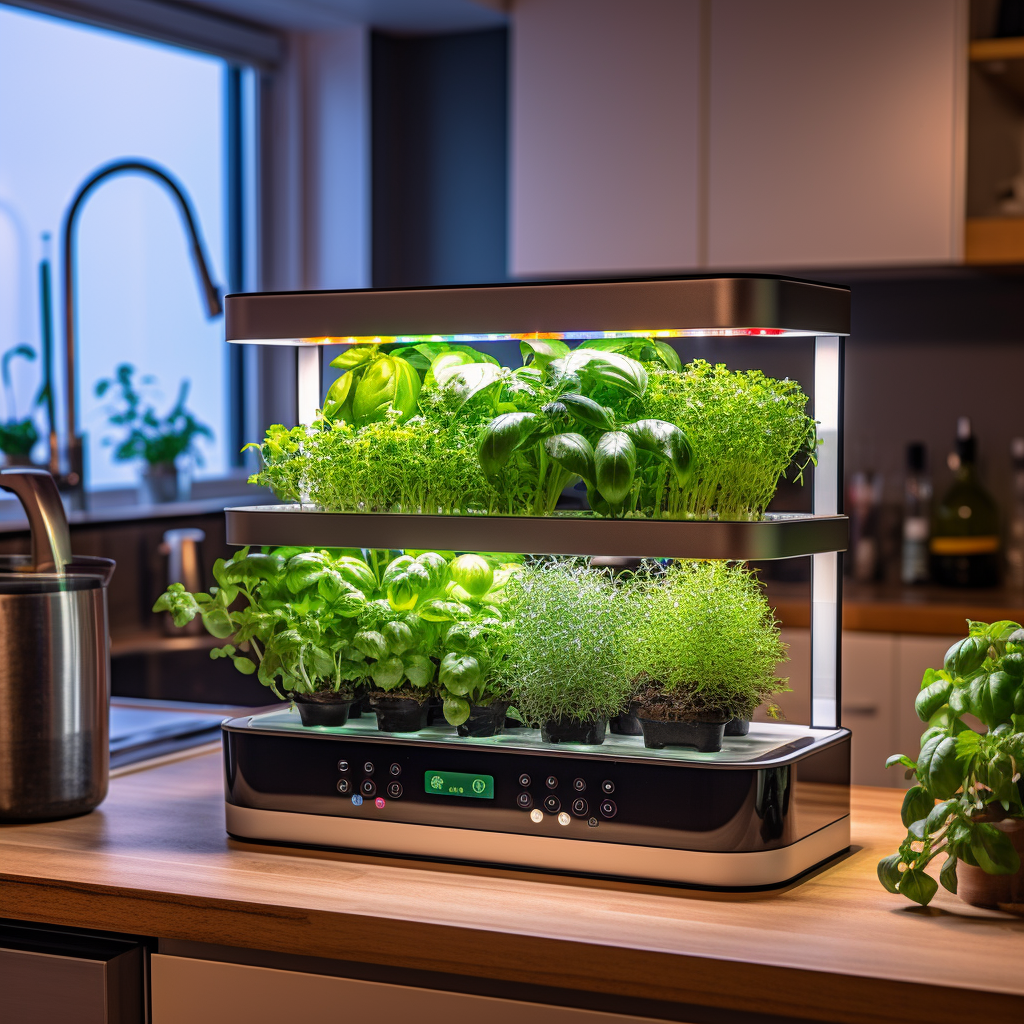
Choosing the Right Herbs for Your Space
Not all herbs are created equal when it comes to indoor gardening. To ensure success, consider the light, temperature, and humidity of your space. Herbs like basil, chives, and parsley love sunlight and can flourish on a sunny windowsill. If your kitchen lacks natural light, don’t worry. Your Smart Garden has optimal growing conditions, even if you have little light or sunshine and regardless or external weather conditions. So you can grow effortlessly all year round.
Popular Herbs for Kitchen Smart Herb Gardens
-
Basil
-
Mint
-
Chives
-
Parsley
-
Cilantro
Light It Up: Integrating Smart Grow Lights
Light is life for plants. In small spaces where natural light may be limited, smart grow lights allow you to grow easily without the need for sunlight or direct access to windows. These lights provide the full spectrum of sunlight needed for plants to photosynthesize and thrive. The best part? They’re designed to fit seamlessly into your home decor. With sleek designs and adjustable settings, you can provide your plants with the perfect amount of light with just the touch of a button.
Smart grow lights are more than just a light source; they’re a tool for better plant growth. They come with features like timers and dimmers, allowing you to mimic natural light cycles. This not only helps your plants but also maintains the cozy ambiance of your home. Plus, with energy-efficient LED options, you’ll save on your electricity bill while giving your plants the best care.
Remember, your indoor garden should be a source of joy, not a chore. With smart grow lights, you can rest easy knowing your plants are getting exactly what they need, even when life gets busy. It’s about making gardening fit into your lifestyle, not the other way around. So go ahead, light it up and watch your garden glow!
Understanding Smart Grow Light Technology
Grow lights are more than just replacements for sunlight. They’re sophisticated devices that cater to the specific light spectrum needs of your plants. LEDs are the most popular choice for indoor gardens because they’re energy-efficient and produce less heat, which is ideal for small spaces. Full-spectrum LEDs mimic natural sunlight, providing the blue and red wavelengths that plants need for photosynthesis. With these lights, your herbs and vegetables will grow fuller and faster, no matter the weather outside.
Install-and-Forget: Automated Light Systems
One of the smartest moves you can make for your indoor garden is installing an automated light system. These systems take the guesswork out of gardening. They’re equipped with timers to switch on and off, replicating the natural day-night cycle. Some even adjust their brightness based on the time of day. Once set up, these systems require little to no intervention from you. It’s the perfect solution for busy folks who want to enjoy the perks of gardening without the daily fuss.
Vertical Gardening: Grow Up, Not Out
Vertical gardening is a real space-saver. It’s a brilliant way to maximize your growing area by using vertical space on walls or over furniture. This method is not just practical; it also adds a stunning visual element to your home. Climbing plants, hanging vines, and tiered shelves full of greenery can turn a blank wall into a living piece of art. And with the right setup, tending to your vertical garden can be just as easy as any other indoor plant arrangement.
Utilizing Wall Planters and Hanging Pots
Wall planters, purpose made set-ups and hanging pots are an easy and stylish way to get into vertical gardening. They come in all shapes and sizes, from sleek modern designs to rustic terracotta pots. When choosing planters, consider the watering needs of your plants. Some wall planters are designed with built-in reservoirs to reduce watering frequency. Hanging pots can be placed at different levels to create a dynamic display that’s as beautiful as it is functional.
You can either buy a ready made setup to suit your smart gardening needs, or make one and add the smart components separately.
Hydroponics at Home: Soil-Free Growing
Hydroponics is a futuristic way to garden indoors, and it’s perfect for small spaces. This method uses a nutrient-rich water solution to grow plants without soil. The roots get exactly what they need, when they need it, leading to faster growth rates and higher yields. Plus, without soil, you say goodbye to the mess and pests that can come with traditional gardening. It’s a clean, efficient, and surprisingly simple way to garden indoors.
Building a Basic Hydroponic System for Healthy Living
Starting a hydroponic garden might sound high-tech, but it’s easier than you think. You’ll need a container for the water and nutrients, which can be as simple as a plastic storage bin. Add a submersible pump to keep the water moving and oxygenated, and an air stone for extra aeration. Then, choose a growing medium like rockwool or clay pellets to support your plants. With a water pH test kit and some hydroponic nutrients, you’re all set. Place your plants in net pots, submerge the roots in the nutrient solution, and watch them grow!
A purpose built Smart Hydroponic set-up takes the guess work out of growing indoors.
Plant Nutrition and Maintenance Tips
In hydroponics, plants get their food directly from the water, so regular maintenance is key. Here’s what you need to do: check the pH level of the water every few days and adjust it if necessary. Refresh the nutrient solution every couple of weeks to ensure your plants are getting all the essential minerals. Keep an eye out for signs of nutrient deficiencies like yellowing leaves or stunted growth, and address them promptly. With these simple steps, your plants will be lush and productive.
That’s a lot of work, so using a ready made Smart garden for hydroponic growing is a simple solution.
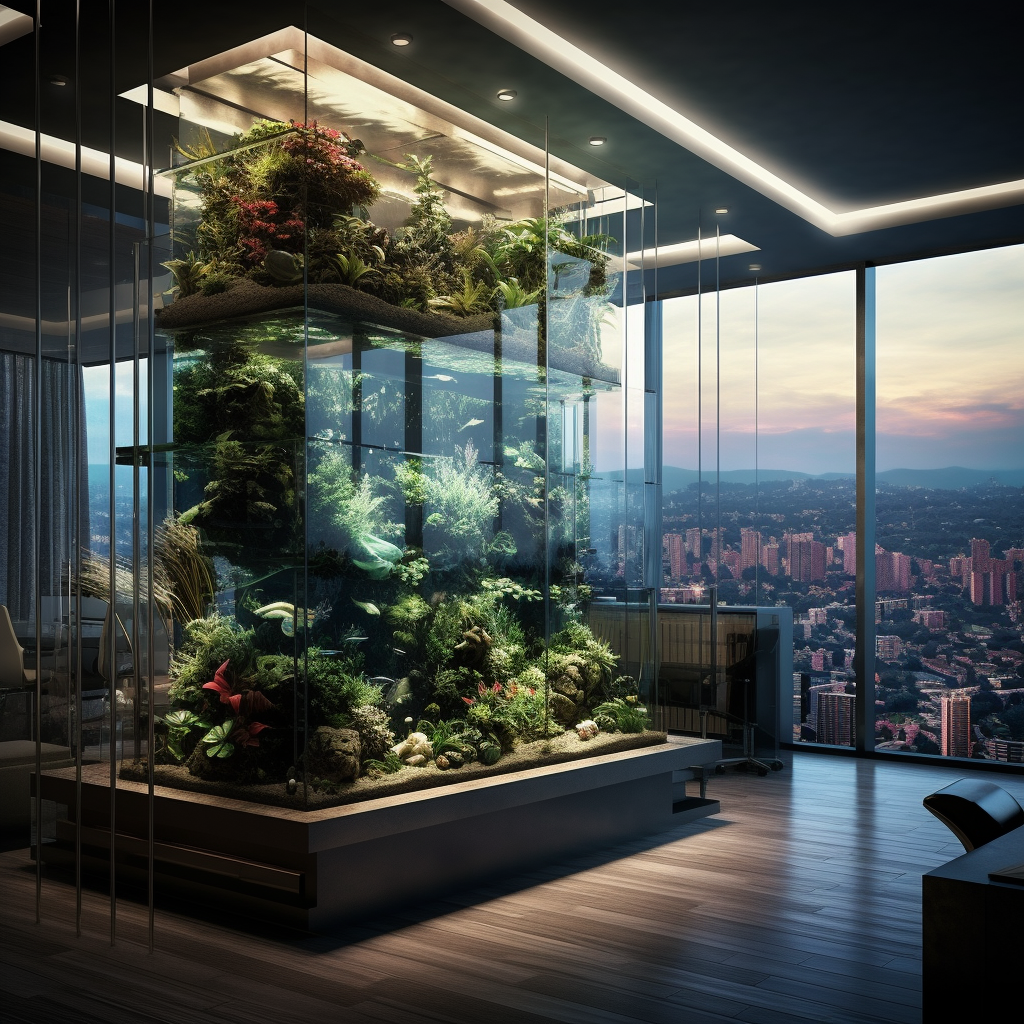
Self-Sustaining Ecosystems: Creating Indoor Greenhouses
Indoor greenhouses are the ultimate dream for many plant lovers. They create a controlled environment where your plants can flourish year-round. The best part? You can build one yourself. An indoor greenhouse can range from a small shelf with a clear cover to a large cabinet with built-in lighting and ventilation. Whatever the size, the goal is the same: to create a stable environment for your plants to thrive in.
Materials and Tools You’ll Need
Building an indoor greenhouse starts with choosing the right materials. You’ll need a frame, which can be made of wood or metal, and a clear material like plastic sheeting or glass to let in light. You’ll also need some tools: a saw for cutting the frame, a drill for assembling it, and a staple gun or screws to attach the plastic or glass. With these basic supplies, you’re ready to construct a cozy home for your plants.
Temperature and Humidity Control Techniques
Managing temperature and humidity is crucial in an indoor greenhouse. Before Smart technology an old fashioned thermometer and hygrometer were necessary monitor conditions. Now Smart gardens and gardening apps, automate the entire process leaving no room for error.
Smart Gardening Tech: Gadgets That Make Growing Easier
Modern technology has given us some incredible tools to make indoor gardening almost effortless. Smart sensors can track light, temperature, humidity, and soil moisture, sending alerts to your phone when your plants need attention. Automated watering systems can water your plants for you, and app-controlled grow lights let you adjust the light schedule with a few taps on your screen. With these gadgets, you can enjoy the benefits of a garden without the daily grind.
Automated Watering Systems
Keeping your plants hydrated doesn’t have to be a daily chore. Automated watering systems are here to save the day—and your plants! These systems can range from basic drip irrigation kits to more sophisticated soil moisture sensors that deliver water exactly when your plants need it. Just set up the system, fill the reservoir, and let technology do the rest. Your plants will always have the right amount of water, and you’ll have more time to enjoy your indoor oasis.
Apps and Trackers for Garden Health
In this digital age, your plants can be as connected as you are. Garden health apps and trackers put a wealth of information at your fingertips. These apps can remind you when to water or fertilize, track growth patterns, and even diagnose plant diseases with a simple photo. Trackers monitor environmental conditions and send you updates, ensuring your garden is always in peak condition. It’s like having a personal gardener in your pocket.
The Aesthetic Appeal: Blending Decor with Function
Your indoor garden is more than just a collection of plants; it’s an extension of your living space. The beauty of integrating plants into your home is that they serve a dual purpose: they purify the air while also enhancing your decor. By selecting the right plants and accessories, you can create a space that is both functional and stylish. Let’s dive into how you can select plants and accessories that reflect your personal style and bring life to your home.
Choosing Plants That Complement Your Style
Plants are like living sculptures, each with its own character and charm. Whether you prefer the minimalist elegance of succulents or the lush foliage of tropical plants, there’s a variety to suit your style. Consider the color palette of your home and select plants with complementary hues. If you’re drawn to a more bohemian aesthetic, mix and match different textures and sizes for an eclectic look. For a modern vibe, choose architectural plants with clean lines. The key is to pick plants that make you happy and fit the aesthetic of your space.
In conclusion, Smart indoor garden ideas are transforming both small and large home spaces into lush, productive areas. Whether you’re growing herbs on your kitchen windowsill, integrating smart grow lights into your living room, or setting up a hydroponic system in your spare corner or balcony, the possibilities are endless. Embrace the joy of gardening, no matter the size of your space. It’s about making the most of what you have and enjoying the fresh flavors and vibrant greenery that come with it. So go ahead, forget the dirty hands, bugs and seasonal changes, make your home a little greener all year round—it’s worth it!
Key Takeaways: Article-at-a-Glance
-
Discover how to create a thriving indoor garden in a limited space.
-
Learn which herbs are best suited for your indoor conditions.
-
Find ready made Smart gardens for any purpose and size.
-
Understand the importance of smart grow lights for plant health.
-
Get tips on how to integrate technology into your indoor garden for ease and efficiency.

